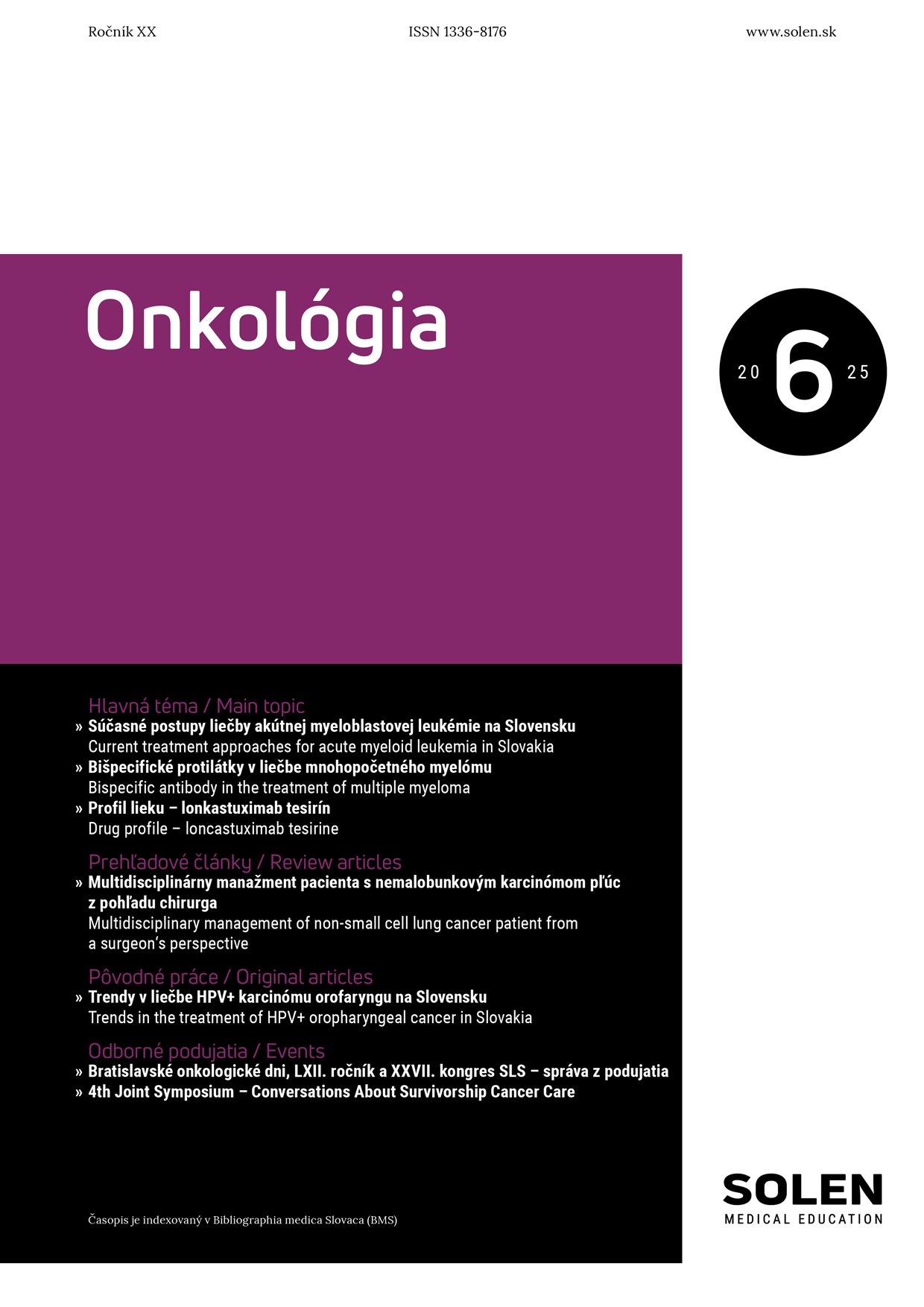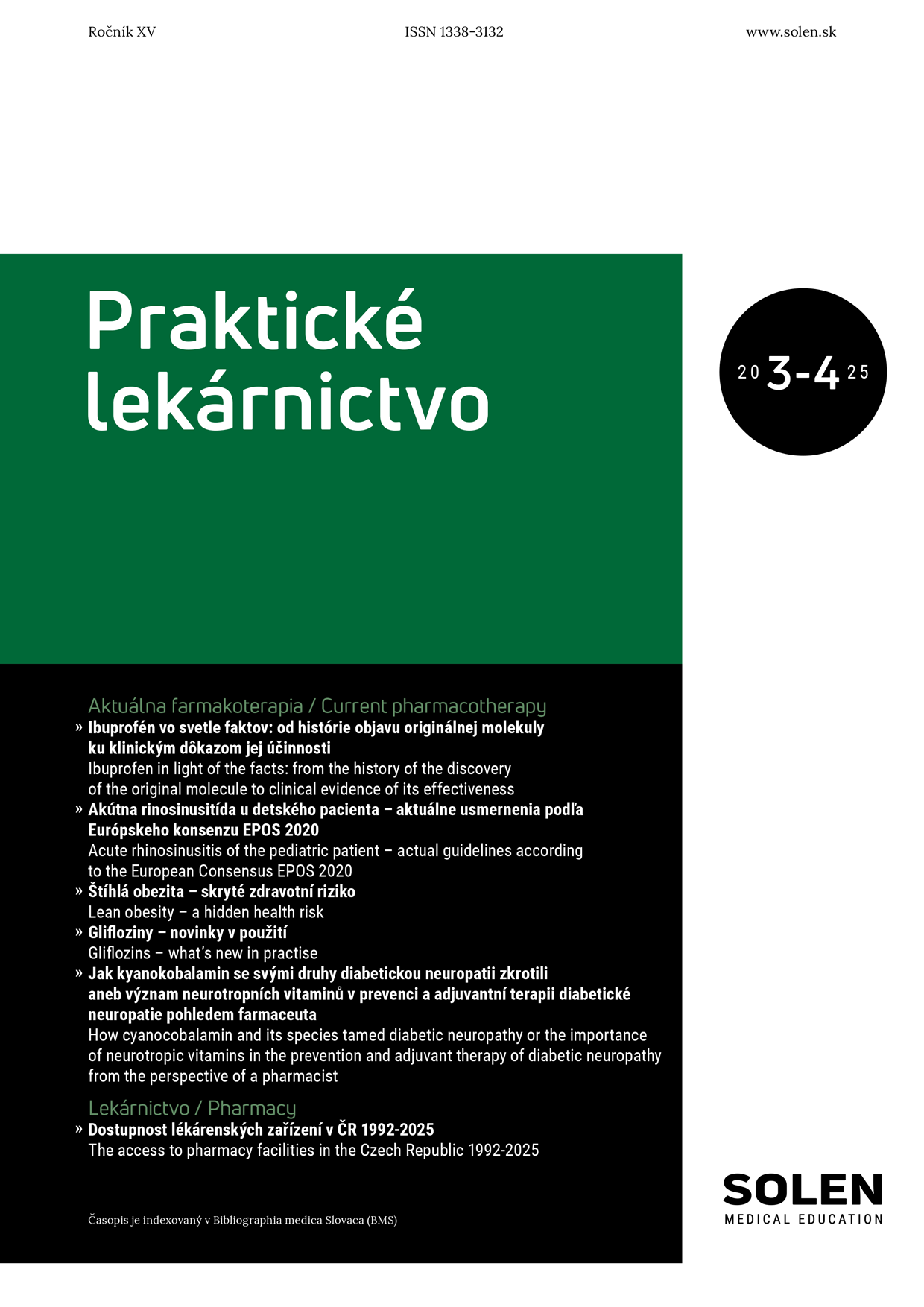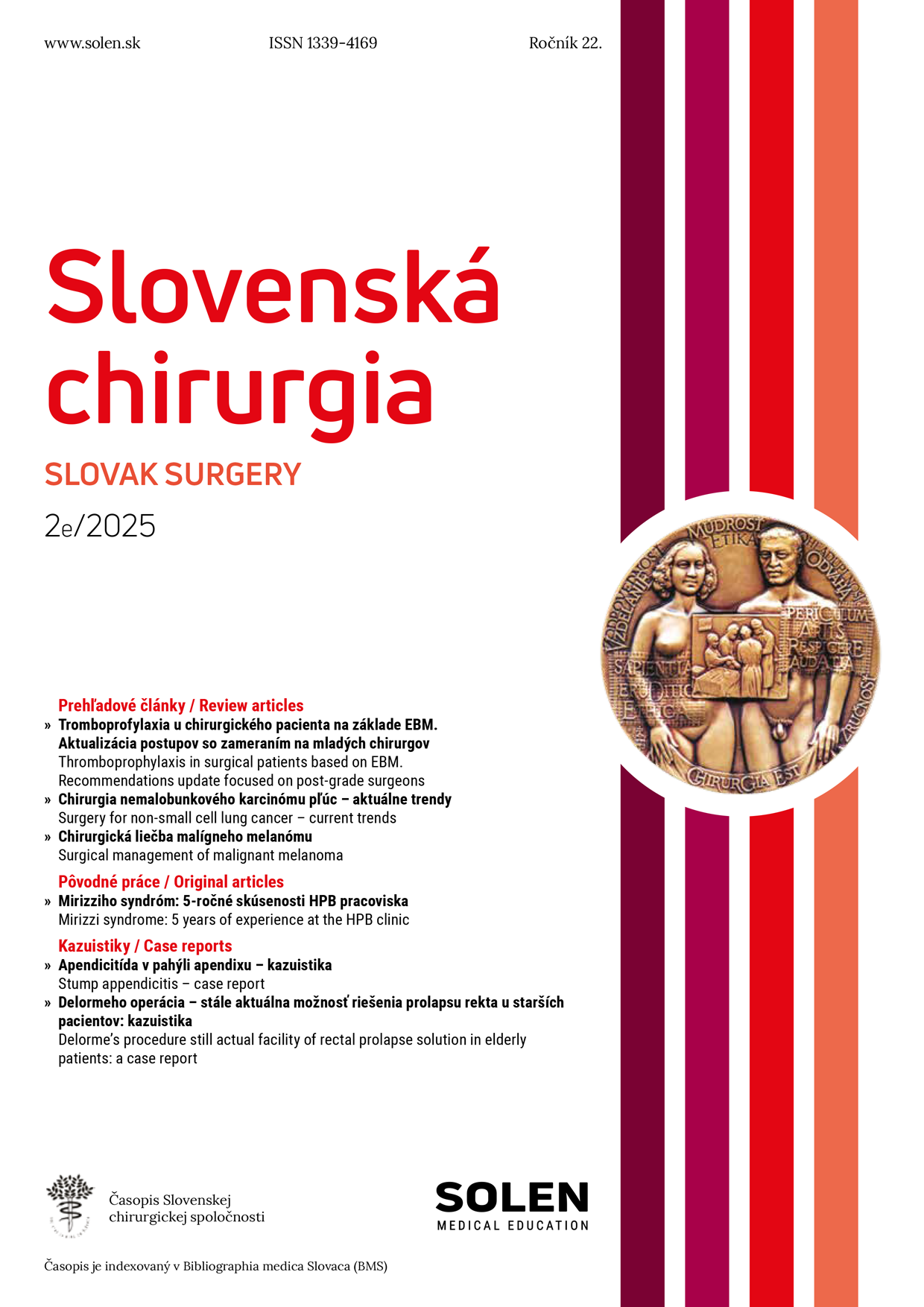Neurológia pre prax 5/2012
Léze trigeminu
Přehledný článek, zabývající se postižením trigeminálního nervu. Anatomicky nervus trigeminus (n. V) je smíšený senzitivní a motorický nerv. Dělí se na 3 větve, n. ophtalmicus, n. maxillaris a n. mandibularis. Tyto větve zprostředkují vnímání povrchové, kožní a slizniční citlivosti z oblasti obličeje, vlasaté části hlavy před interaurikulární čárou, dutiny ústní, nosní, z oblasti paranazálních dutin a oka. Senzitivní aferentace jde přes talamus do primární senzitivní korové oblasti. Motorické centrální neurony jsou lokalizovány v primární motorické korové oblasti. Motoricky n. trigeminus inervuje žvýkací svaly. Příčiny postižení trigeminu jsou různé, například traumata, cévní postižení, záněty, demyelinizace, nádory i další. Prevalence a incidence neuropatií trigeminu nejsou známé, v literatuře jsou jako nejčastější příčiny uváděny iatrogenní postižení (při zubním ošetření), traumata, dále pak tumory mostomozečkového koutu a baze lební. Celosvětově je asi nejčastější příčinou postižení trigeminu lepra. Text také pojednává o některých z primárních bolestí hlavy (migréna, cluster headache, paroxyzmální hemikranie a SUNCT), které jsou podmíněny dysfunkcí trigeminovaskulárního systému.
Kľúčové slová: n. trigeminus, etiologie trigeminálních lézí, trigeminové autonomní bolesti hlavy, sekundární postižení trigeminu.
Trigeminal lesions
The present review article deals with the trigeminal nerve. Anatomically, the trigeminal nerve (CN V) is a mixed sensory and motor nerve. It divides into three branches: the ophthalmic nerve, the maxillary nerve, and the mandibular nerve. These branches mediate the perception of superficial, dermal, and mucosal sensitivity from the face, the scalp anterior to the interauricular line, the oral and nasal cavities, from the region of the paranasal sinuses, and from the eye. Sensory afferentation passes via the thalamus to the primary sensory cortical areas. Motor central neurons are located in the primary motor cortical area. In terms of motor function, the trigeminal nerve innervates the muscles of mastication. The causes of injury to the trigeminal nerve vary and include, for example, trauma, vascular injury, inflammations, demyelination, or tumours. The prevalence and incidence of trigeminal neuropathies are not known; the most frequent causes reported in the literature include iatrogenic injury (in dental treatment), trauma, and cerebellopontine angle and skull base tumours. Worldwide, leprosy is perhaps the most frequent cause of injury to the trigeminal nerve. The paper also deals with some of the primary headaches (migraine, cluster headache, paroxysmal hemicrania, and SUNCT) that are linked to dysfunction of the trigeminovascular system.
Keywords: n. trigeminus, etiologie trigeminálních lézí, trigeminové autonomní bolesti hlavy, sekundární postižení trigeminu.

















